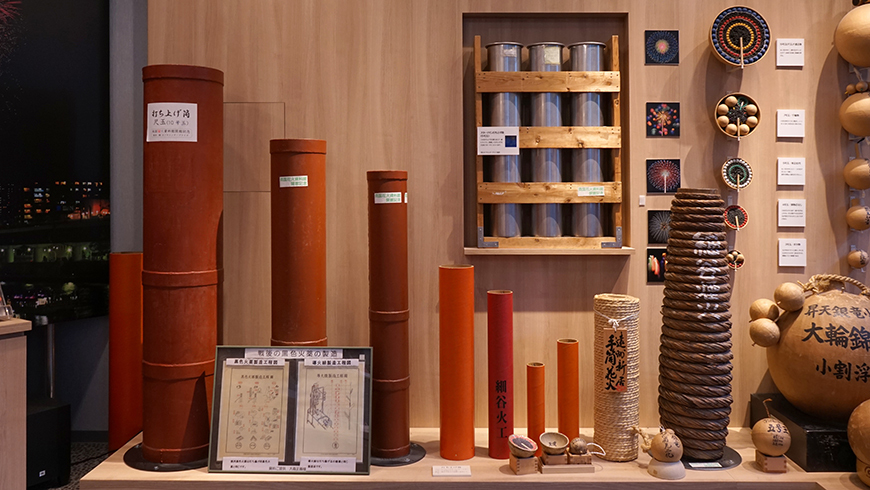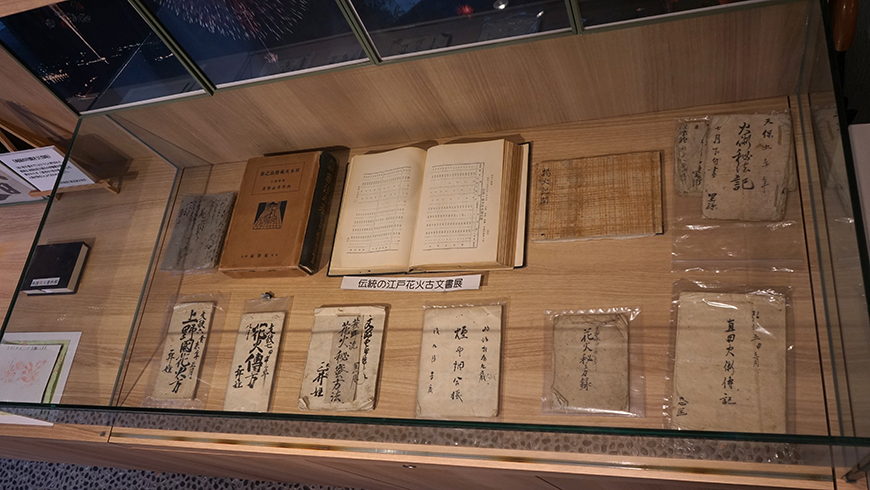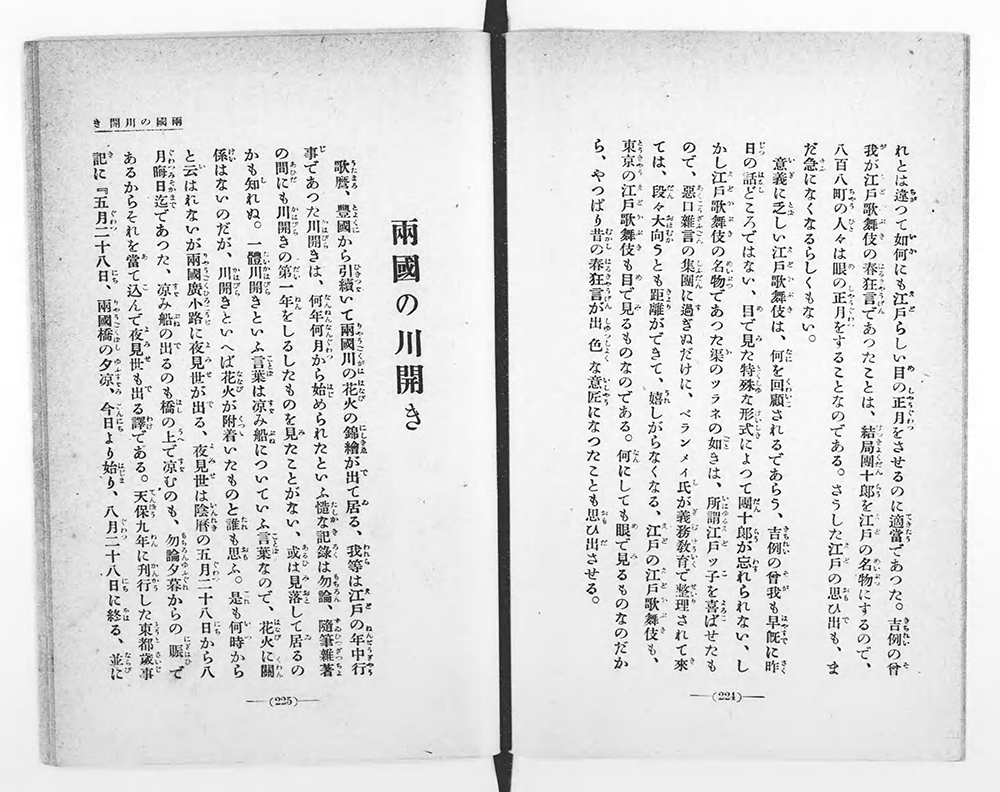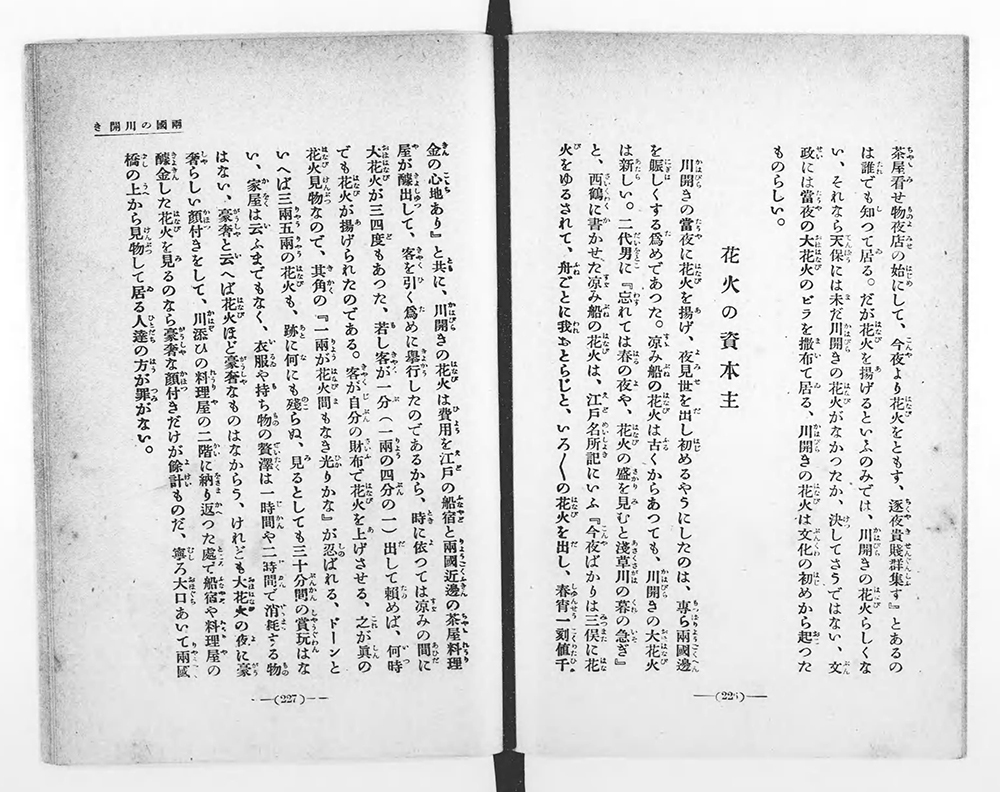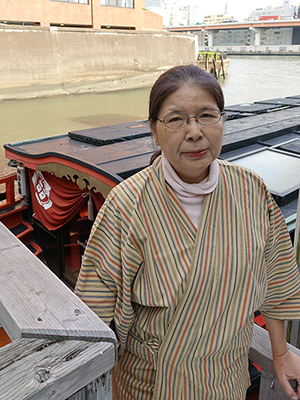
We talked with Junko Sato who runs Funayado Komatsuya, an operator of pleasure boats, and heard the history of Sumida River Fireworks Festival. This interview was conducted in October 2017.
About the history of Sumida River Fireworks Festival
Q: Could you talk about the origin of the fireworks event at the Sumida River?
Sato: It is said that the fireworks event held on the day of a river festival of Ryogoku derived from an event in which the 8th General Yoshimune Tokugawa shot off fireworks at Ryogoku in 1732 in order to console spirits of dead people who died from famine and an epidemic of dysentery, and ward off the plague. Originally, a water god festival was held on the day of a river festival of the Sumida River, and the fireworks event was also held on the day in conjunction with it. It seems that the event was a Buddhist service called "Segaki." Fireworks events became popular in Edo before General Yoshimune held the fireworks event at Ryogoku, and many fires occurred, so those events were prohibited, and restricted to the right bank of the lower Sumida River.
Q: You said that the fireworks event originated from a river festival of Ryogoku. Was the event related to Senso-ji Temple and Asakusa Shrine?
I think it had less to do with Senso-ji Temple and Asakusa Shrine because I heard that a chief priest and many priests of Sumidagawa Shrine boarded boats on the day of an end-of-the-season river festival. We have also received talismans from Sumidagawa Shrine during the New Year's holiday. The shrine is a well-recognized shrine that worships the god of water. (continued in the lower column)
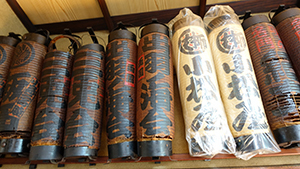
Paper lanterns used for houseboats
Q: How was the fireworks event continued until the Showa Period?
The 2/26 Incident occurred in 1936, and the fireworks event at Ryogoku was suspended before the start of the Second World War in 1941 while circumstances at home and abroad were drastically changed. It was suspended from 1938 to 1947.
The large area around the Sumida River was burned out due to air raids in January and March 1945.
In around 1948 after the war, Japanese-style restaurants were gradually rebuilt, and the number of them increased. In early March 1948, my father (Yasunobu Akimoto) was consulted by a chairman of the Japanese-style restaurants association in Yanagibashi (Mr. Inagaki), and the association, fireworks experts and pleasure-boat offices tried to resume the river festival on August 1 in the same year. They visited related government offices from day to day, and finally the first fireworks after the war were successfully fired off on August 1 (Saturday), the day of a neap tide, at a venue between the Ryogoku and Kuramae Bridges.
Q: What kind of organization carried out the fireworks event that was held after the war?
The Japanese-style restaurants association in Yanagibashi operated "Ryogoku Hanabi Kumiai," a fireworks association in Ryogoku, before and after the war. In the Edo Period, restaurants located in Ryogoku Hirokoji and an area along Okawa, which were prominent entertainment districts, worked together to shoot off fireworks. I heard that when a nationwide fireworks competition was held after the fireworks event was resumed, fireworks were shot off from a venue between the Ryogoku and Shin-ohashi Bridges, and stands were set up on streets at Hamacho Gashi. Later, the shooting off venue was changed from the Ryogoku Bridge to a venue between railway bridges of the Sobu Line. (continued in the right column)
Q: What kind of connection was there between the fireworks event and Japanese-style restaurants?
"Ryogoku Hanabi Kumiai" is an association for shooting off fireworks, which consists of the Japanese-style restaurants association in Yanagibashi and other organizations. Those Japanese-style restaurants set up raised platforms connected to their rooms on the bank of Okawa, and moor boats on the river so that many customers can enjoy viewing fireworks. In such a way, the fireworks event has been carried out by "Ryogoku Hanabi Kumiai," other than under sponsorship of a local government.
Engyo Mitamura, who was active from the Meiji through Showa Periods, and is said to be the founder of Edo studies that research Edo cultures and customs, quite ironically wrote in his writings that successful businessmen saw front fireworks (at Japanese-style restaurants), and common people crossed the Ryogoku Bridge to see back fireworks because, I think, there were also set pieces of fireworks for Japanese-style restaurants. (continued in the lower column)
The section of a river festival in " Goraku no Edo" by Engyo Mitamura (1925, Published by Keifukan) (Courtesy of the National Diet Library)
It says that Ryogoku Hanabi Kumiai comprised of teahouses and Japanese-style restaurants at Yanagibashi held fireworks events three to four times in a year so that people could enjoy the evening cool.

Q: How was the fireworks event continued after that?
Then, the period of high economic growth began, and the Sumida River was polluted with industrial wastewater, and traffic volumes also increased, so the long-continued fireworks event at Ryogoku ended with the last fireworks in the summer of 1961. At that time, the Sumida River was in a terrible condition with pollution and a smell of methane. Also, the riverbanks were built in the same period, Okawa (the Sumida River), which was formerly seen from gardens of Japanese-style restaurants, became invisible, raised platforms set up by Japanese-style restaurants disappeared, a highway was built along the river, and the number of Japanese-style restaurants decreased gradually. (continued in the lower column)
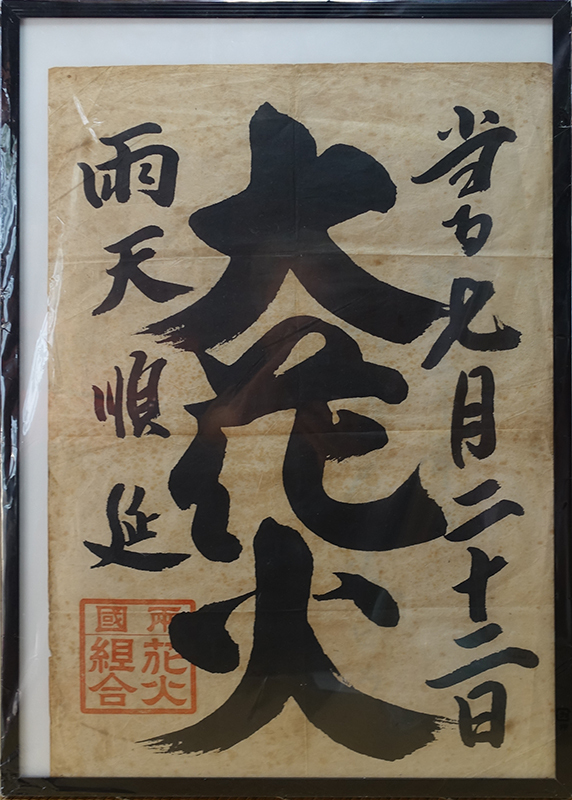
A handwritten notice for a fireworks event held by Ryogoku Hanabi Kumiai. It was said that, if sumi ink on the first notice blotted, it would rain. (Calligraphy by Shigejiro Ito of Ryogoku Hanabi Kumiai)
About the end-of-the-season river festival
Q: Were there some boating events besides the river festival?
Although the start of the annual boating season at Okawa (the Sumida River) is the day of the river festival, there was no end-of-the-season festival, so an assistant chairman of the Japanese-style restaurants association in Yanagibashi (Mr. Koyasu) consulted with my father, thinking that floating lanterns on the water might be good for the festival, and they decided to resume the end-of-the-season festival, which was conducted in the past. Finally, "Ryuto Matsuri" revived on September 10, 1954. They made dragon-shaped boats with Japanese paper pasted on them, and performed famous geisha dances on them. They also created 70 miniature straw boats with lanterns on which visitors wrote their wishes, and washed them down the Sumida River. A chief priest and many priests of Sumidagawa Shrine boarded boathouses, and conducted a rite of purification to comfort spirits of dead people who died in the Sumida River. The end-of-the-season festival was held in late August or early September. It continued to be held until August 24, 1971. (continued in the next page)

Junko Sato, an owner of Funayado Komatsuya










